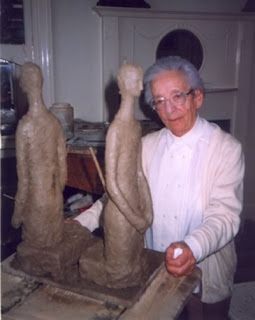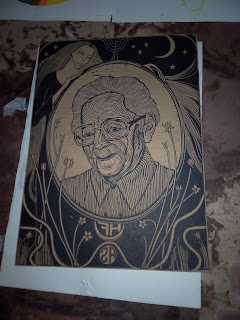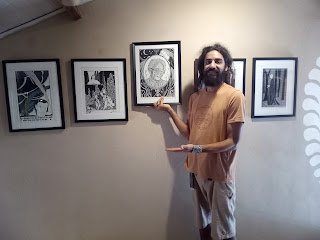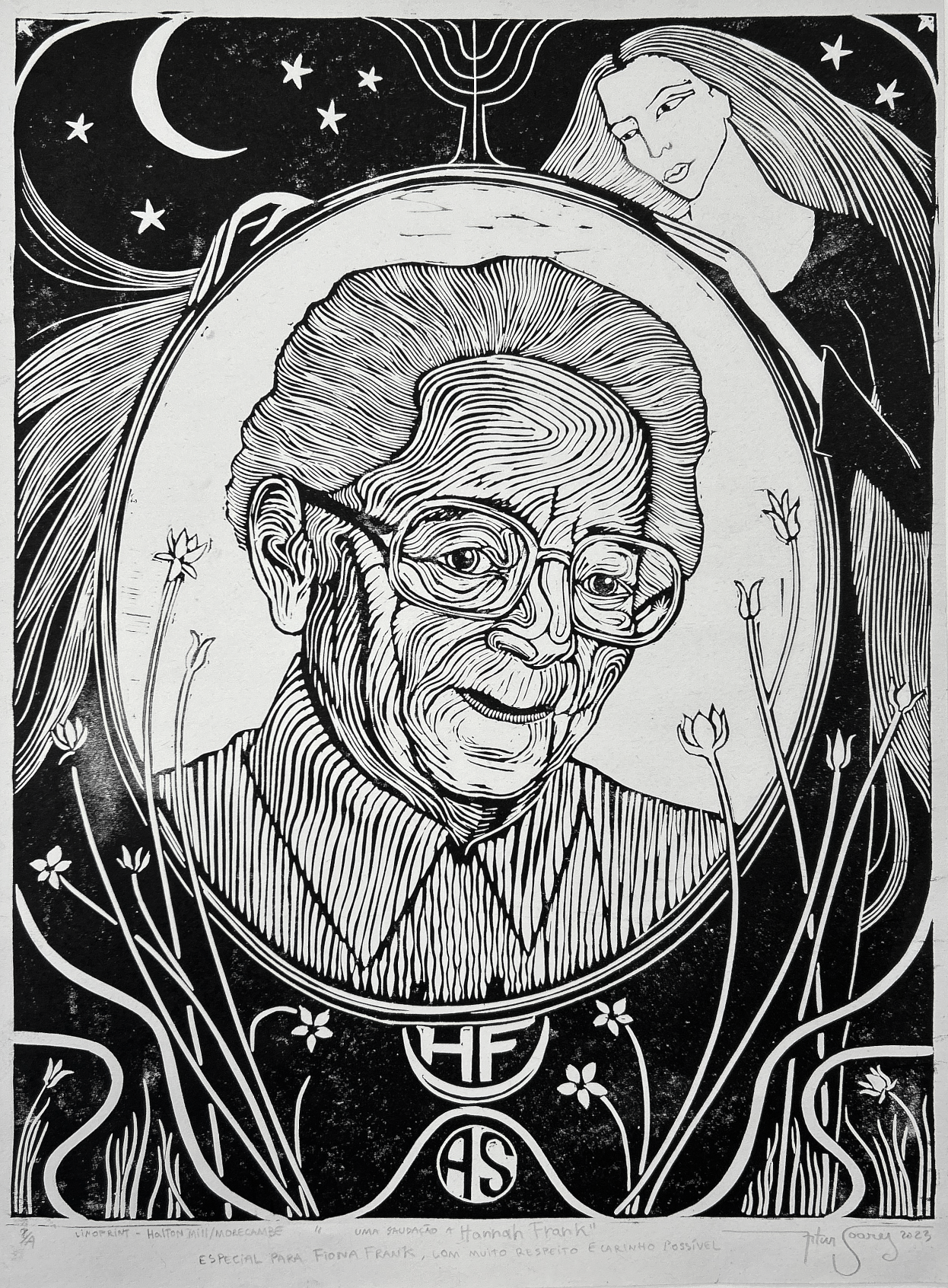Hannah Frank by award-winning Brazilian artist Artur Soar.
Print from Linocut, December 2023, Lancaster
Artist’s Statement
While on an artistic residency in the north west of England I had the opportunity to spend ten days in the home of Fiona Frank, niece of the late Glasgow Jewish artist Hannah Frank (1908-2008). Fiona was away travelling to Brazil so I spent the days at ‘Good Things Collective’, an art cooperative in Morecambe, and the evenings and nights alone in Fiona’s home, which is in Lancaster Cohousing, an eco-cohousing project next to a river in the village of Halton near Lancaster. Her home is full of the drawings and sculpture of her aunt Hannah Frank and I also found a photo of the artist, aged in her nineties, working on what was to be one of her last sculptures before she retired from art, saying she was “no longer creating new work”.

Fiona had a large table in her living room next to the French windows leading onto the river. I felt a deep connection with the nature and the art and slowly I started to work on that table. I began a lino cut which would bring Hannah’s work to life. I surrounded the frame with the motifs that Hannah used in her early drawings – the moon, stars, flowers and grasses typical of her work. I took one of the six women from ‘Garden’ done in 1932 when the artist was 24 years old, and drew her supporting a new portrait of Hannah Frank that I made from the photograph.

I spent some time deciding whether the background of the portrait should be in black or white, but I was happy with my final decision of making it white as it accords with Hannah Frank’s own artistic transformation – the drawings she created later in her life all contained much more white space. Ironically, as opposed to Hannah’s technique of pen and ink, where the white space is left uncovered by the ink, white space using the lino cut technique is more ‘work’ than having it black, as the ink only attaches to the uncarved areas of the finished lino cut, and everything that will end up being white space has to be carved out of the lino.
I completed the work with our initials HF and AS – hers in white on black, and mine in black on white – at the bottom, and at the top a Hanukiah, the nine-branched candlestick used during the Jewish festival of Hanukah which began during my visit to Halton. Fiona told me afterwards that the Hanukiah that I used as a model for this was one which her aunt had kept in her bedroom till she died. So it turns out that the whole piece had Hannah’s spirit as well as her artistic energy running through it.

When I returned to Brazil, I presented a framed print of this engraving to Fiona – who by then had arrived at my mother’s home in Lençóis: she was visibly moved. Together we hung the drawing in pride of place in the Soar gallery in Lençóis next to an exhibition of Hannah’s work which runs from 23 December 2023 to 15 February 2024 and will then tour in Brazil.

